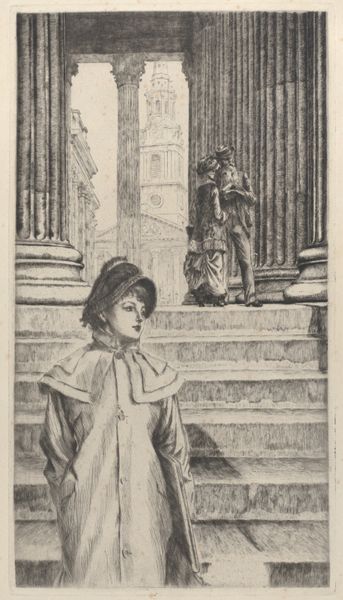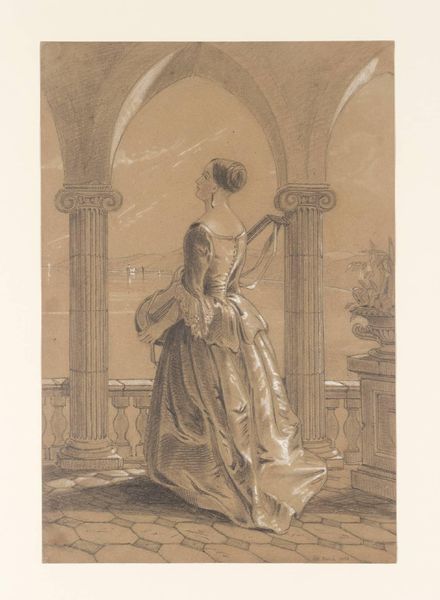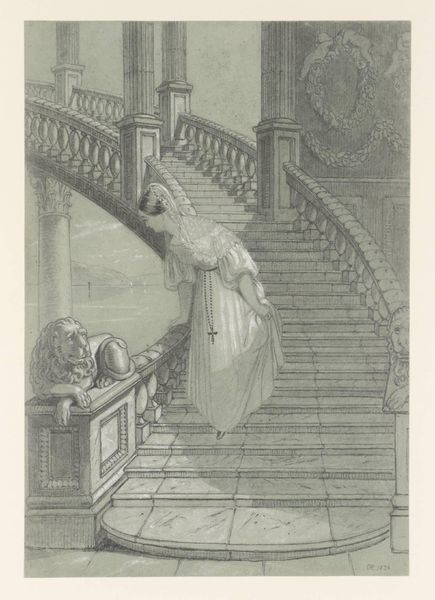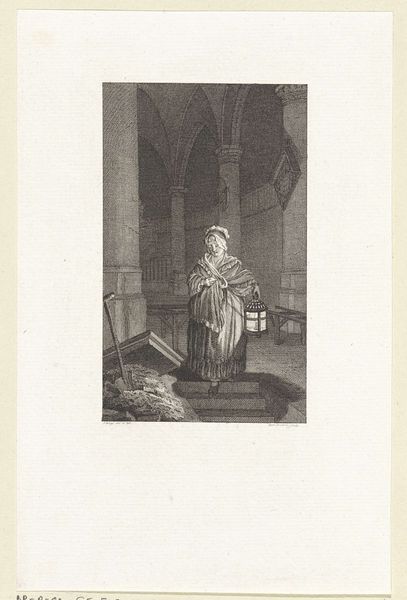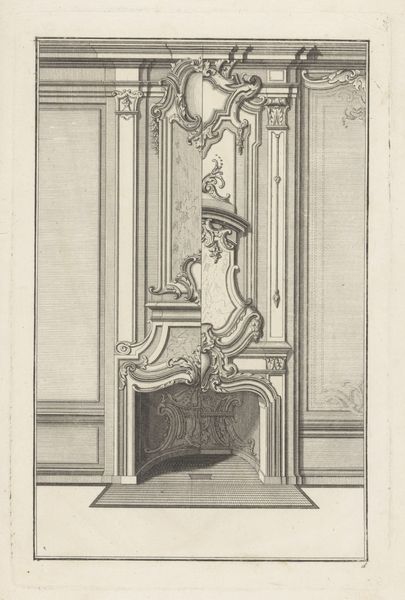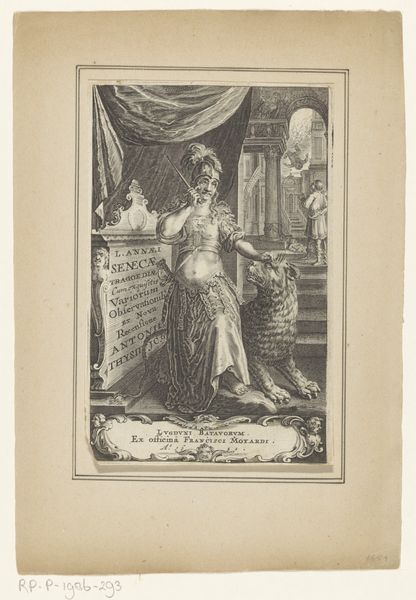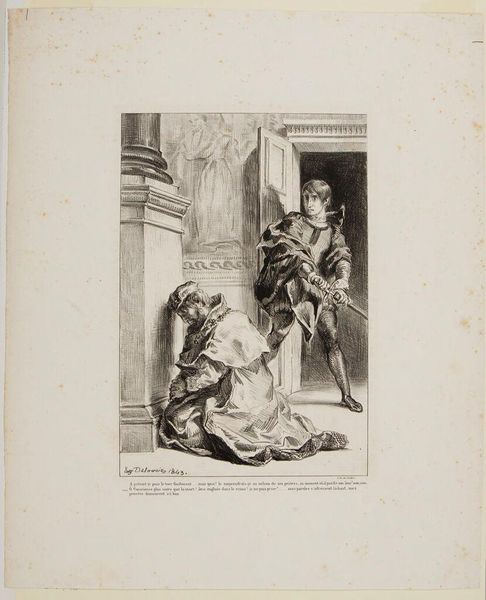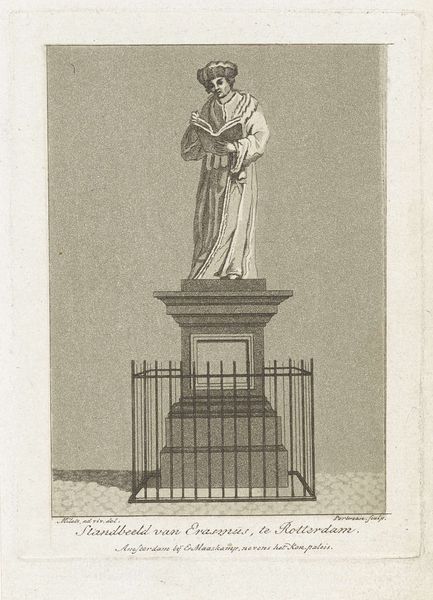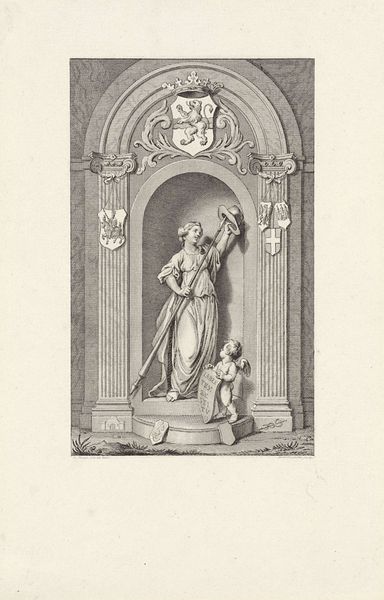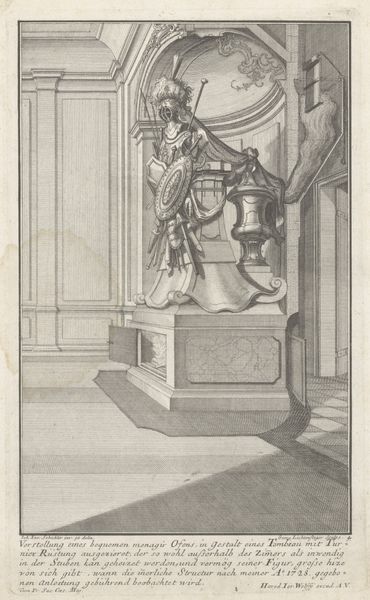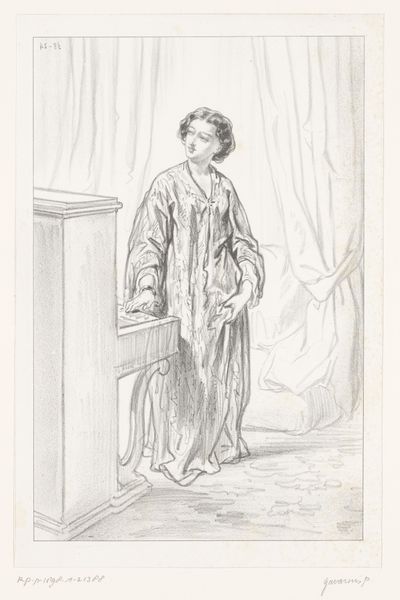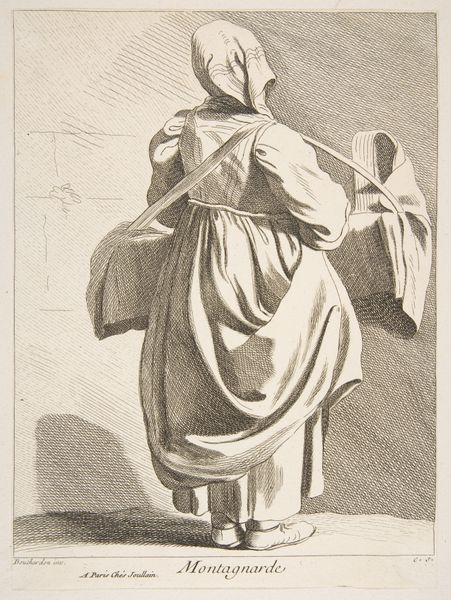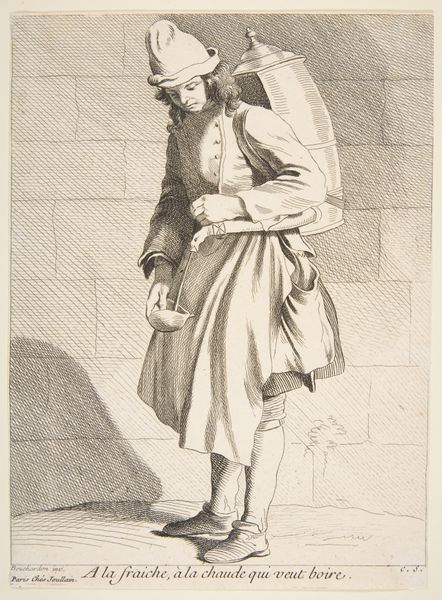
drawing, print, etching
#
portrait
#
drawing
# print
#
etching
#
pencil drawing
#
cityscape
#
portrait drawing
#
realism
Dimensions: 14 1/2 x 7 15/16 in. (36.83 x 20.16 cm) (plate)17 1/2 x 11 1/8 in. (44.45 x 28.26 cm) (sheet)
Copyright: No Copyright - United States
Editor: This etching, "The Portico of the National Gallery" by James Tissot, created in 1878, has such a specific, almost wistful, feeling to it. It's a scene of everyday life outside a grand institution, yet it captures this feeling of longing, perhaps? What do you see in this piece? Curator: It’s a loaded image, isn’t it? Tissot, a French artist depicting a quintessentially British scene… consider the socio-political dynamics at play. This isn't just a portrait; it’s a glimpse into Victorian society, carefully staged. What does it say about access, class, and gender that the woman is set apart from the couple ascending the stairs? Notice how the grandeur of the architecture dwarfs the figures. Is it an invitation, or a barrier? Editor: I hadn't considered it in terms of access, but I see what you mean. The woman in the foreground almost seems excluded. Do you think Tissot was consciously commenting on these social divisions? Curator: It’s impossible to know his exact intentions, but as an artist navigating Victorian London, he was acutely aware of social stratification. He was, after all, painting for a specific audience: one with the means to acquire such a print. This raises questions of who gets to participate in and consume art, then and now. What are your thoughts about that distance now? Editor: That makes so much sense when thinking about how we’re still asking those questions today about who art is made for. The historical context really enriches the meaning. Thanks! Curator: Absolutely. By examining art through a critical lens, considering factors like class, gender, and historical context, we can understand these artworks on a deeper level.
Comments
No comments
Be the first to comment and join the conversation on the ultimate creative platform.
